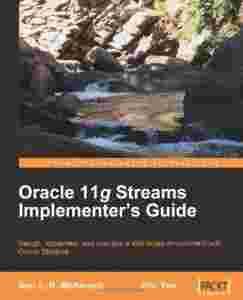|
 |
Autor: Ann L. R. McKinnell , Eric Yen
Wydawnictwo: Packt Publishing
Data wydania: 19 Jan 2010
Ilość stron: 332
Wymiary książki: 1.8 x 23.1 x 18.8 cm
Rodzaj okładki: Paperback
ISBN-13: 978-[zasłonięte][zasłonięte]71997
978-[zasłonięte][zasłonięte]71997A
From smaller businesses through to huge enterprises – users all over the world often require access to data 24 hours a day. Distributed database systems proliferate the world of data sharing providing an ability to access real-time data anywhere, anytime. Oracle Streams, a built-in feature of the Oracle database, is a data replication and integration feature critical to the success and wellbeing of enterprises in today's fast moving economy. This book provides the reader with solid techniques to master Oracle Streams technology and successfully deploy distributed database systems.
This book quickly goes over the basics and gets you up and running with a simple Oracle 11g Streams environment. It will serve as an excellent companion to the Oracle Streams Administration Guide. It is intended for Oracle database architects and administrators, and provides in-depth discussion on must-know information for the design, implementation, and maintenance of an Oracle Streams environment.
The book does not attempt to regurgitate all the information in the Oracle Streams Administration Guides, but rather provides additional clarification and explanation of design, implementation, and troubleshooting concepts that are often elusive in Streams documentation. It also identifies helpful tools and Oracle resources to add to your knowledge base, as well as tried and tested tricks and tips to help you tame Oracle Streams.
The book starts by introducing and explaining the components of Oracle Streams and how they work together. It then moves on logically, helping you to determine your distributed environment requirements and design your Streams implementation to meet those requirements. Once these concepts are discussed, the book moves to configuration and basic implementation examples to help solidify those concepts. It then addresses advanced features such as tags, down-stream capture, and conflict resolution. You then move on to maintenance techniques such as documenting the environment, effectively planning and implementing changes to the environment, and monitoring and troubleshooting the environment. When you have studied the techniques and completed the hands-on examples, you will have an understanding of Oracle Streams' core concepts and functionally that will allow you to successfully design, implement, and maintain an Oracle Streamed environment.
|
|

